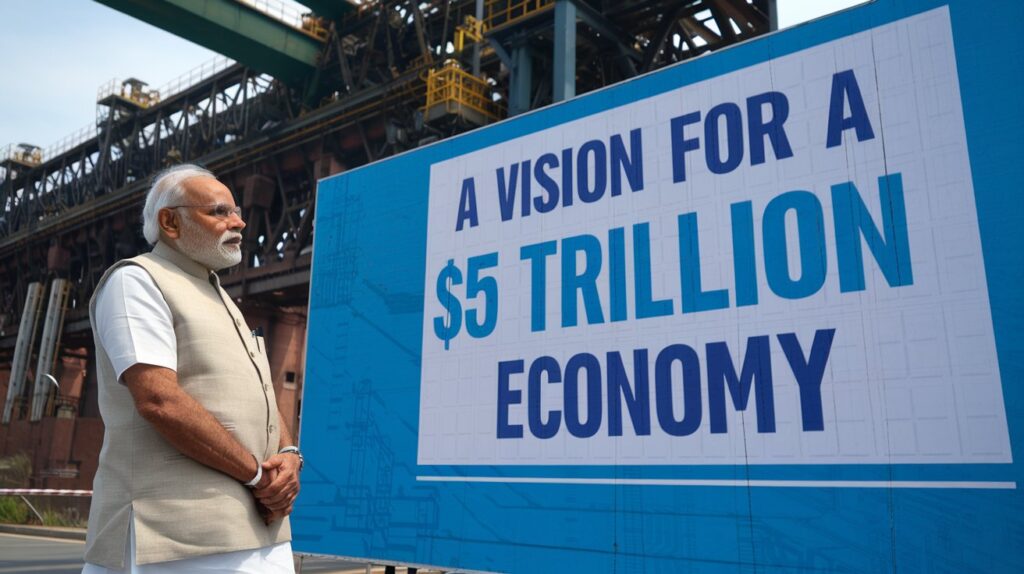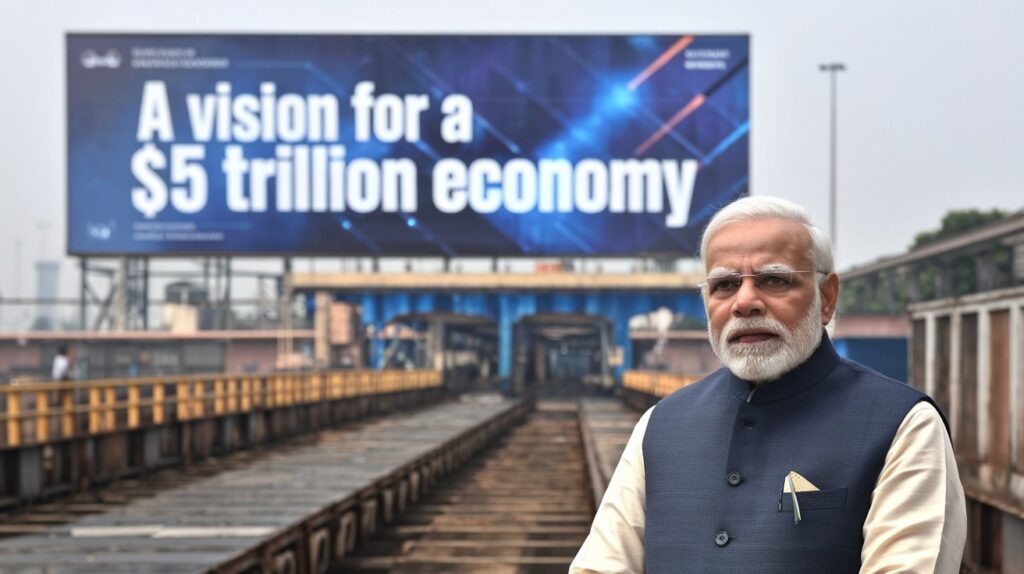India’s aspiration to become a $5 trillion economy hinges on transformative initiatives, with the Delhi Mumbai Industrial Corridor playing a pivotal role.
This ambitious infrastructure project is designed to bolster industrial growth, streamline logistics, and enhance India’s position as a global manufacturing hub.
Here, we explore the DMIC concept, its latest updates, and its potential to propel India’s economic ambitions.

What is the Delhi-Mumbai Industrial Corridor?
The Delhi Mumbai Industrial Corridor is a mega infrastructure project aimed at connecting India’s political capital, Delhi, with its financial capital, Mumbai, through a state-of-the-art industrial corridor. Spanning 1,483 km, this corridor is designed to integrate high-speed freight transportation, industrial zones, smart cities, and infrastructure to create a seamless industrial ecosystem.
Key Features of the DMIC:
- Multi-Modal Connectivity: A high-speed freight rail line will connect the two cities, supported by road networks, airports, and ports to facilitate logistics.
- Smart Cities: The corridor will host several smart cities equipped with modern infrastructure, technology-driven services, and sustainable practices.
- Special Economic Zones (SEZs): Dedicated industrial zones will provide a business-friendly environment with incentives, robust infrastructure, and streamlined regulations.
- Green Energy Focus: Integration of renewable energy sources, such as solar plant in gujarat and wind, to ensure sustainable operations.
- Global Manufacturing Hub: Attracting investments from global corporations by offering world-class facilities and simplified processes.
Why is DMIC Significant?
- Economic Boost: It is expected to significantly enhance india gdp growth rate by promoting industrial output, job creation, and infrastructure development.
- Ease of Doing Business: By addressing logistics and infrastructure bottlenecks, the DMIC simplifies operations for businesses.
- Regional Development: It will create new urban and industrial centers, reducing the burden on existing metropolises.
Latest Updates on the DMIC
Progress and Current Status
As of 2024, the DMIC has made substantial progress in terms of land acquisition, construction, and operationalization of key projects. Some of the key updates include:
- Dholera Smart City: Located in Gujarat, Dholera is the first smart city under the DMIC. infrastructure development in india such as roads, water management systems, and green energy projects are nearing completion.
- Freight Corridor Progress: The Dedicated Freight Corridor (DFC), a critical component of the DMIC, is now operational in some segments, significantly reducing transit times for goods.
- Aurangabad Industrial City (AURIC): Maharashtra’s AURIC has emerged as a promising industrial hub, attracting domestic and international investments in sectors like electronics, engineering, and biotechnology.
- Enhanced Investment Opportunities: The delhi mumbai industrial corridor has attracted significant FDI from countries such as Japan and South Korea, with companies expressing interest in establishing manufacturing units.
Concept of the Delhi Mumbai Industrial Corridor
At its core, the DMIC is based on the concept of “industrial corridors in india”—clusters of industries supported by world-class infrastructure, seamless connectivity, and smart city ecosystems.
Key Objectives:
- Enhancing Industrial Competitiveness: By offering modern facilities and reducing logistics costs, industries can compete better in the global market.
- Urbanization with Purpose: Building smart cities and industrial hubs that are well-planned, technologically advanced, and environmentally sustainable.
- Promoting Manufacturing Excellence: Focusing on sectors such as electronics, automobile, pharmaceuticals, and textiles to establish India as a manufacturing powerhouse.
- Fostering Employment: Generating millions of direct and indirect jobs across the value chain.
DMIC and India’s $5 Trillion Economy Vision
journey to a 5 trillion economy india is fueled by projects that foster industrialization, infrastructure development, and innovation. The Delhi Mumbai Industrial Corridor :

- Acts as a catalyst for economic growth, contributing significantly to the GDP.
- Enhances export potential by improving global supply chain integration.
- Attracts FDI and technology partnerships, strengthening India’s position as a manufacturing destination.
- Encourages regional economic equity, reducing the urban-rural divide and uplifting underdeveloped regions.
Conclusion
The Delhi Mumbai Industrial Corridor represents a bold vision for boost economic growth rate in india. By blending industrial growth with cutting-edge infrastructure and sustainability, the dmic project is not just a project but a blueprint for India’s aspirations as a global economic leader. As the corridor progresses, its impact will resonate far beyond its geographical boundaries, making it a cornerstone of India’s march towards becoming a $5 trillion economy.
India stands at the cusp of an industrial revolution, and the Delhi Mumbai Industrial Corridor is the locomotive driving this transformation.

1 thought on “What is the Delhi Mumbai Industrial Corridor (DMIIC)?”
Comments are closed.